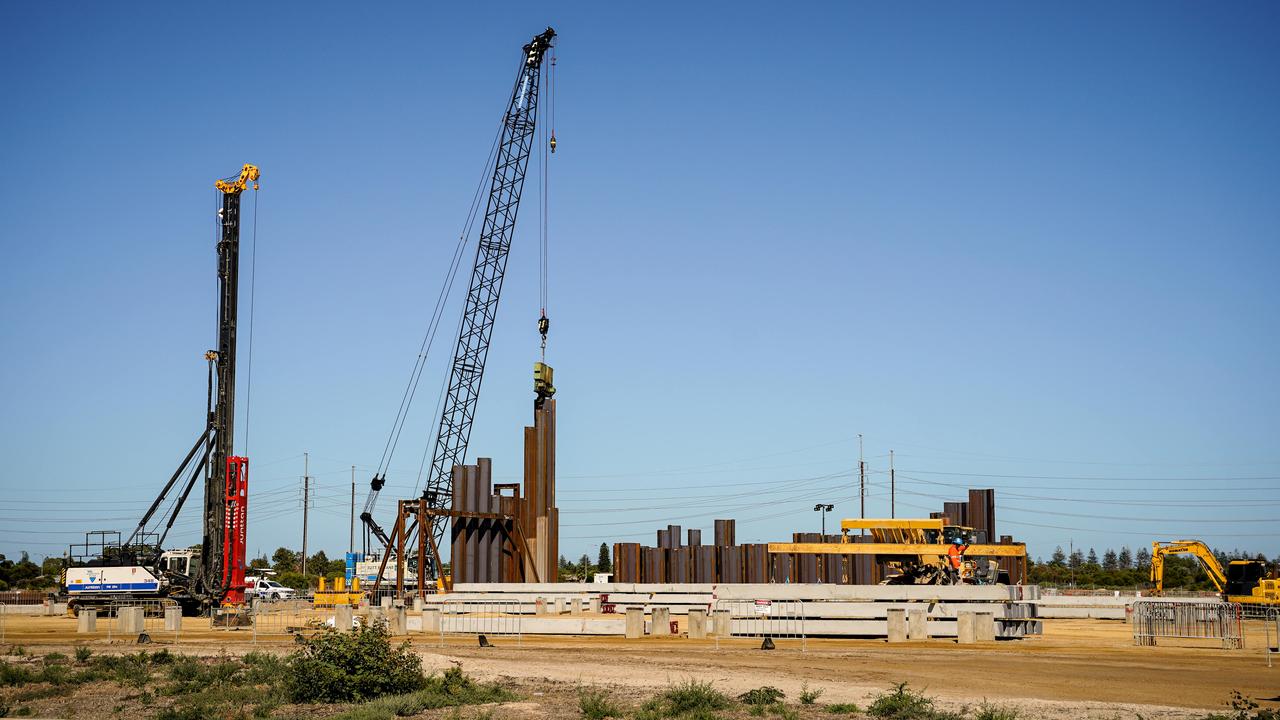Adelaide’s Nova Systems is bidding to kit out our soldiers of the future with drones, robots and personal exoskeletons
An Adelaide-led consortium is bidding to fit out the nation’s high-tech future soldiers to fight on networked battlefields with robots and drones.
Cameron England
Cameron England
@CameronEngland
3 min read
October 8, 2021 - 7:20PM
The Australian Business Network
The science-fiction soldiers of the future - kitted out with personal exoskeletons, electronic translators and supported by drones and robots, are about to become a reality for Australia’s armed forces.
It’s a vision which Team Sabre - a tripartite collaboration between Adelaide’s Nova Systems, BAE Systems Australia and Safran - wants to bring to life as part of its bid for the Federal Government’s Land 125 Phase 4 Integrated Soldier System.
Sabre - the Soldier Augmentations and Battlefield Robotic Enablers - draws on skills honed on the ground in Afghanistan and Iraq across all three companies, and aims to ensure that the solution proposed will equip Australian soldiers with everything from body armour to batteries to ensure they are fighting fit for the 21st century.
Nova Systems capture manager Kyle Stockman, who graduated from the Australian Defence Force Academy a decade ago and served for 10 years in the Australian Defence Force (ADF), including being deployed to Iraq in 2017, said technology played an increasingly vital part on the battlefield.
 The infantry soldier system being designed by Team SABRE, which is made up of Nova Systems, Safran and BAE Systems Australia. Supplied
The infantry soldier system being designed by Team SABRE, which is made up of Nova Systems, Safran and BAE Systems Australia. Supplied
The next generation of soldiers will be accompanied by robots to carry equipment, personal and platoon drones which can be deployed for reconnaissance and operational reasons, and will at times be equipped with personal exoskeletons conferring superhuman lifting power and the ability to carry heavier loads for longer.
And with modern soldiers operating as part of a networked whole, lightweight, high-powered batteries are a necessity - which throws up a soldier’s heat signature as a problem to solve.
BAE business development manager John Shipp, who helped trained Iraqi security forces and served in the Royal Australian Army’s mechanised 7th Battalion, said with technology demands adding to other vital equipment and supplies including water, food, sleeping gear and ammunition, the individual load carriage was becoming too heavy.
“Our platoons need to be able to patrol and fight for extended periods without depending on vulnerable supply lines or carrying more weight than the human body should carry.
“A big part of the Integrated Soldier System is lightening this load – giving our soldiers more endurance and mobility, and hopefully a few less injuries too.
“It’s also about making sure people with different body types can serve effectively on our front lines without breaking themselves.’’
 The Team Sabre bid will involve autonomous vehicles, drones and personal exoskeletons. Picture: Supplied
The Team Sabre bid will involve autonomous vehicles, drones and personal exoskeletons. Picture: Supplied
Mr Stockman said Sabre had recently been down-selected - defence jargon for short-listed - for the Land 125 tender.
The tender is expected to be worth more than $1bn over its eight to ten year lifetime, and is designed to supply soldiers with everything they need to be deployed for 72 hours without being resupplied.
Mr Stockman said the three companies involved in Sabre had the complementary skills, and veterans with battlefield experience, to be able to supply the complex needs of the tender.
“The Commonwealth is looking for an industry partner to provide really two aspects: you’re looking at the soldier as a platform, and everything on him, and you’re looking at the RAP, or robotic autonomous platforms.
“What sits under the soldier as a platform, you’re looking at protective equipment, load carriage systems or exoskeletons, your power management systems as well as your data management.
“As well as signature management. You can imagine all of this data, all of this power, that generates a lot of heat. Potentially an opposition could view that through respective lenses, so how do we reduce that?’’
Mr Stockman said the ADF had also specified some particular kit such as electronic translators which could be used in the field to communicate with local residents.
On the robotic front, Mr Stockman said BAE had a lot of experience in this field, with its Loyal Wingman stealth uncrewed aircraft an example.
“(There will be) small drones that can go out ahead of the soldier and be able to identify what’s ahead of them, and in real time provide that information back to the soldier and the team, which is integrated and networked, so they have a great idea what’s ahead of them, where the opposition and the friendlies are. That’s what we call situational awareness.
“The more information you have at hand, the greater advantage you have in that environment.’’
There would also be unmanned ground vehicles.
“That could include casualty evacuation, you could put stretchers on that, right through to logistic elements, putting rations or water or whatever that may be, and potentially you’ll press a button and it will follow you or go to respective points on the map,’’ Mr Stockman said.
Mr Stockman said the operational experience of the participants in the Sabre team was feeding in to the bid.
“We understand what the soldier cares about. Anything that can reduce your physical or cognitive burden makes you able to make decisions quicker and have a competitive edge.
The request for tender for Land 425 is expected to close towards the end of this year with delivery to the ADF expected in 2024.








